Wuhan, 2023 Photonics Technology Summit | "Exploring the Development Trend of Photonics Technology
With the development of society to a high degree of information technology and intelligence, the requirements for high-performance, miniaturization and integration of optoelectronic devices in various application areas are becoming higher and higher. Traditional optoelectronic technology has insurmountable obstacles to meet the needs of the development of optoelectronic devices, optoelectronic breakthroughs look forward to the emergence of new materials, new principles and new technologies.
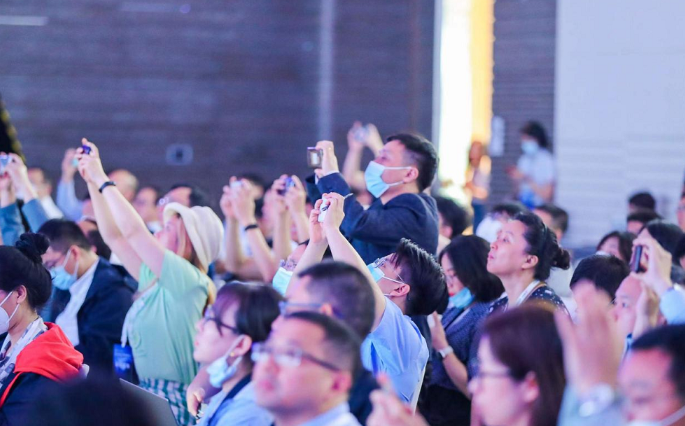
The rapid development of optical communication technology, high-performance optical/electrical chips and devices, short-range optical transmission technology, and new opportunities in optoelectronic technology in recent years. A series of new physical phenomena and unique optoelectronic properties are demonstrated, providing a brand new way to realize new functional optoelectronic devices. On May 15, 2023, Optoelectronics Technology Summit 2023, organized by XUNSHI, was successfully held at Crowne Plaza Wuhan Optics Valley.
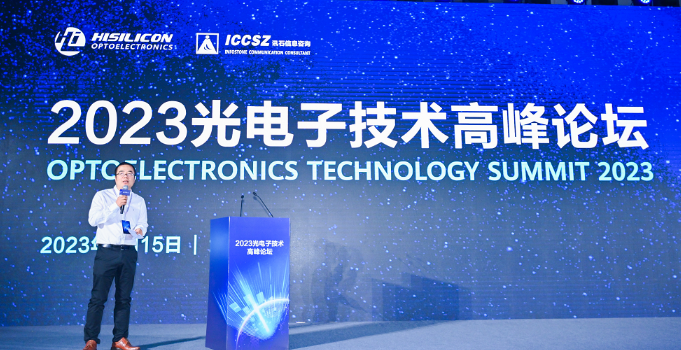
In the morning of May 15, the main forum "Exploring the development trend of optoelectronic technology" focused on the customer needs and future technology evolution of the optical communication industry. Six senior experts and scholars from the optical communication industry chain and research institutes, including Tong Cunzhu, researcher of Changchun Institute of Optical Precision Machinery and Physics, Chinese Academy of Sciences, and Dai Daozhi, Dean of School of Optoelectronic Science and Engineering, Zhejiang University, discussed the technology development trend of the optical communication industry and explored the development direction of optical connectivity.
The first presentation was delivered by John Li, Chairman of IPEC Board of Directors, with the theme "Optical Network Transformation in the Era of Arithmetic", who said: future business development has put forward higher requirements for arithmetic, and the digital economy is driving human society towards the era of arithmetic, and optical network, as the bandwidth cornerstone of new information infrastructure, can provide solid support for arithmetic.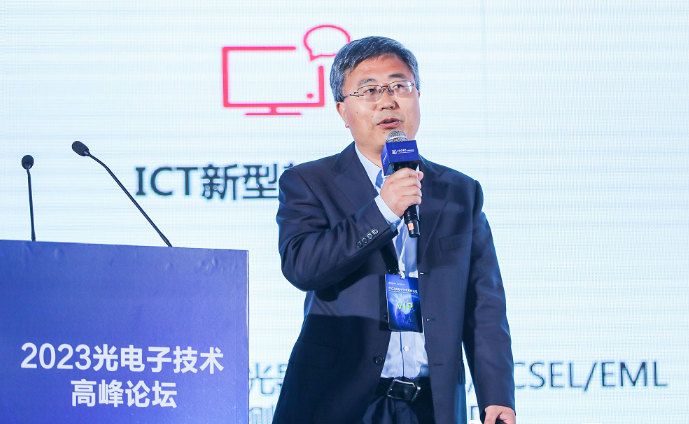
Operators need to build an all-optical network with the characteristics of all-optical, high-capacity, cloud-based and intelligent trends to support the implementation of emerging application scenarios. Based on the development idea of cloud-network integration, China Telecom has carried out practical exploration based on "East Digital and West Computing" to promote the development of arithmetic network in all aspects. At this stage, China Telecom's all-optical network 2.0 creates a high-capacity, high-quality and highly reliable capacity base in the arithmetic era.
At the same time, Li Junjie introduced IPEC (International Photonics Committee) as a non-profit international standards organization, focusing on optical modules, devices and related areas of standards discussion since its establishment in 2020, and now the work is steadily carried out and promoting the continuous evolution of the photonics industry.
In his keynote speech, "Development and Future Trends of China's Optical Communication Electronics Industry", Zhao Wenyu, deputy director of the Institute of Technology and Standards, China Academy of Information and Communication Research, mentioned that telecommunications, data centers and other fields put forward strong demand for optical chips, devices and modules, sharing the technical industrial hotspots and future development trends of optoelectronic chips, devices and modules from the dimensions of high speed rate, integration and high capacity, including high-speed optical modules, silicon-based optoelectronics, pass-sense integration, etc.
Wenyu Zhao made suggestions on the technical development and standardization of optical chips, devices and modules. In terms of future development trends, he said: new processes such as three-dimensional integration and heterogeneous integration continue to evolve; the industry widely explores new solutions to reduce energy consumption such as CPO and linear drive; new applications such as air-space-sea integration and through-sense integration put forward new requirements for chips and devices.
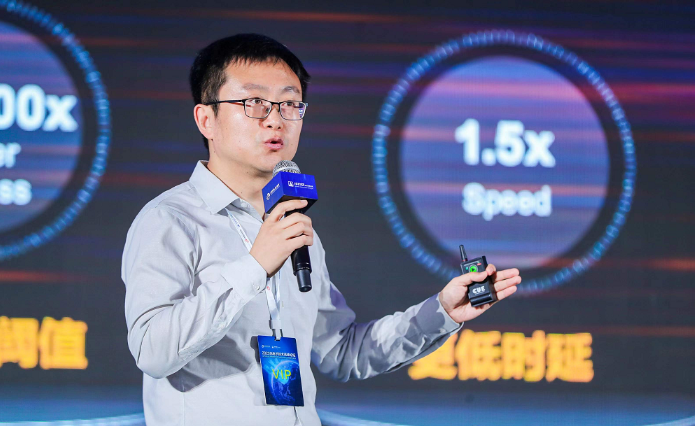
Jiangwei Man, Director of Advanced Optoelectronic Laboratory of Haith Optoelectronics, gave a keynote speech on "Opportunities and Challenges of Optoelectronics in the Development of Optical Communication". In his speech, Jiangwei Man compared various new electro-optical materials such as silicon light, thin film lithium niobate and polymers, mentioning that thin film lithium niobate has received industry attention in recent years, but more research and experimental work is still needed. Photoelectric packaging platform evolved in parallel, from the packaging point of view, to achieve photoelectric joint optimization and interconnection link joint design to support higher bandwidth.
At the same time, the continued development of the optoelectronic industry has greatly expanded the application scenarios of optoelectronics technology, and Man Jiangwei believes that optical sensing, optical display, and industrial lasers will bring new development opportunities for sensing chips, visible light chips, LCoS and high-power optical chips, etc.
Wang Xingjun, Vice Dean of School of Electronics, Peking University, introduced the main research results of his research team in recent years in the keynote speech "Silicon-based optoelectronic integrated chip and information system", with the design and R&D of large-scale silicon-based optoelectronic integrated chip as the core, developing silicon-based multi-material system compatible integration process, developing independent and controllable core single components, integrated chips and functional modules, and in optical communication, microwave photonics, optical sensing We have achieved mechanism innovation, technology breakthrough and performance leap in the fields of optical communication, microwave photonics, optical sensing and optical computing. We have achieved high-capacity optical communication on Tb/s silicon, high-precision microwave photonic signal processing across C-V band, 2 mm high-precision parallel LIDAR imaging, and 1.04 TOPS/mm2 high arithmetic density on-chip optical computing.
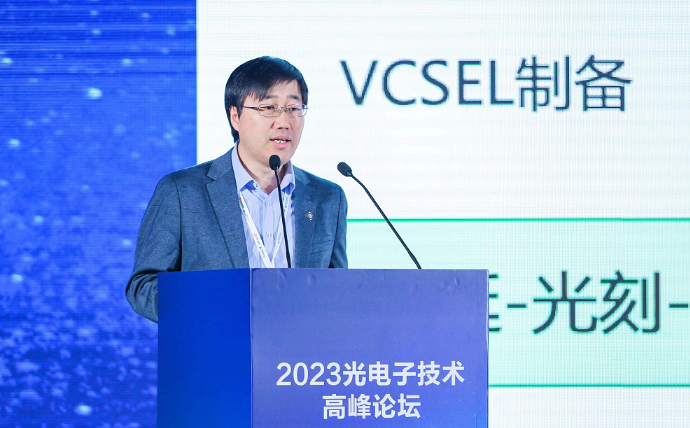
Tong Cunzhu, a researcher at Changchun Institute of Optics, Precision Mechanics and Physics, Chinese Academy of Sciences, presented the keynote speech "Progress and Challenges of High-Speed Surface Emitting Laser Technology", which stated that 71.5% of optical interconnections within data centers are within 100 meters, and the demand for VCSELs for short-range optical interconnections is higher rate, longer transmission distance and lower cost. 850nm VCSELs can achieve a maximum bandwidth of 32GHz and a rate of 69Gbps NRZ. He also introduced the system applications of CWDM 4-wave single fiber, VCSEL single-fiber multi-channel and VCSEL multi-fiber multi-channel, as well as the technology of multi-hole single-mode VCSEL, single-fiber multi-channel VCSEL and 1060nm GaAs-based 5km transmission technology.
In the keynote speech, "Research on High Performance Silicon Optical Devices", Daozin Dai, Dean of School of Optoelectronic Science and Engineering, Zhejiang University, introduced that large-scale silicon optical integration requires faster response, lower power consumption, lower loss, lower crosstalk and smaller size. The research and results of technologies such as multimode photonics, integrated passive devices, hybrid integration and high-speed detection are introduced. It is believed that higher performance and higher integration can be achieved through effective modulation of on-chip light-matter interactions. In addition, he said that silicon optical applications are expected to cover data centers, LIDAR, optical computing, co-packaging engines and healthcare in 2026, with a total value of up to $1.1 billion.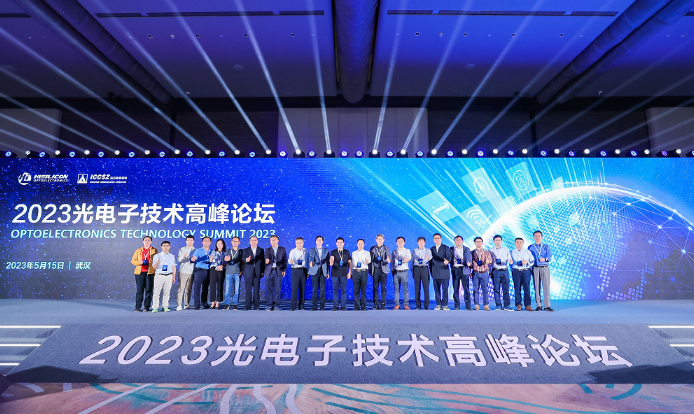
With the development of society to a high degree of information technology and intelligence, the requirements for high-performance, miniaturization and integration of optoelectronic devices in various application areas are becoming higher and higher. Traditional optoelectronic technology has insurmountable obstacles to meet the needs of the development of optoelectronic devices, optoelectronic breakthroughs look forward to the emergence of new materials, new principles and new technologies.

The rapid development of optical communication technology, high-performance optical/electrical chips and devices, short-range optical transmission technology, and new opportunities in optoelectronic technology in recent years. A series of new physical phenomena and unique optoelectronic properties are demonstrated, providing a brand new way to realize new functional optoelectronic devices. On May 15, 2023, Optoelectronics Technology Summit 2023, organized by XUNSHI, was successfully held at Crowne Plaza Wuhan Optics Valley.

In the morning of May 15, the main forum "Exploring the development trend of optoelectronic technology" focused on the customer needs and future technology evolution of the optical communication industry. Six senior experts and scholars from the optical communication industry chain and research institutes, including Tong Cunzhu, researcher of Changchun Institute of Optical Precision Machinery and Physics, Chinese Academy of Sciences, and Dai Daozhi, Dean of School of Optoelectronic Science and Engineering, Zhejiang University, discussed the technology development trend of the optical communication industry and explored the development direction of optical connectivity.
The first presentation was delivered by John Li, Chairman of IPEC Board of Directors, with the theme "Optical Network Transformation in the Era of Arithmetic", who said: future business development has put forward higher requirements for arithmetic, and the digital economy is driving human society towards the era of arithmetic, and optical network, as the bandwidth cornerstone of new information infrastructure, can provide solid support for arithmetic.
Operators need to build an all-optical network with the characteristics of all-optical, high-capacity, cloud-based and intelligent trends to support the implementation of emerging application scenarios. Based on the development idea of cloud-network integration, China Telecom has carried out practical exploration based on "East Digital and West Computing" to promote the development of arithmetic network in all aspects. At this stage, China Telecom's all-optical network 2.0 creates a high-capacity, high-quality and highly reliable capacity base in the arithmetic era.
At the same time, Li Junjie introduced IPEC (International Photonics Committee) as a non-profit international standards organization, focusing on optical modules, devices and related areas of standards discussion since its establishment in 2020, and now the work is steadily carried out and promoting the continuous evolution of the photonics industry.
In his keynote speech, "Development and Future Trends of China's Optical Communication Electronics Industry", Zhao Wenyu, deputy director of the Institute of Technology and Standards, China Academy of Information and Communication Research, mentioned that telecommunications, data centers and other fields put forward strong demand for optical chips, devices and modules, sharing the technical industrial hotspots and future development trends of optoelectronic chips, devices and modules from the dimensions of high speed rate, integration and high capacity, including high-speed optical modules, silicon-based optoelectronics, pass-sense integration, etc.
Wenyu Zhao made suggestions on the technical development and standardization of optical chips, devices and modules. In terms of future development trends, he said: new processes such as three-dimensional integration and heterogeneous integration continue to evolve; the industry widely explores new solutions to reduce energy consumption such as CPO and linear drive; new applications such as air-space-sea integration and through-sense integration put forward new requirements for chips and devices.

Jiangwei Man, Director of Advanced Optoelectronic Laboratory of Haith Optoelectronics, gave a keynote speech on "Opportunities and Challenges of Optoelectronics in the Development of Optical Communication". In his speech, Jiangwei Man compared various new electro-optical materials such as silicon light, thin film lithium niobate and polymers, mentioning that thin film lithium niobate has received industry attention in recent years, but more research and experimental work is still needed. Photoelectric packaging platform evolved in parallel, from the packaging point of view, to achieve photoelectric joint optimization and interconnection link joint design to support higher bandwidth.
At the same time, the continued development of the optoelectronic industry has greatly expanded the application scenarios of optoelectronics technology, and Man Jiangwei believes that optical sensing, optical display, and industrial lasers will bring new development opportunities for sensing chips, visible light chips, LCoS and high-power optical chips, etc.
Wang Xingjun, Vice Dean of School of Electronics, Peking University, introduced the main research results of his research team in recent years in the keynote speech "Silicon-based optoelectronic integrated chip and information system", with the design and R&D of large-scale silicon-based optoelectronic integrated chip as the core, developing silicon-based multi-material system compatible integration process, developing independent and controllable core single components, integrated chips and functional modules, and in optical communication, microwave photonics, optical sensing We have achieved mechanism innovation, technology breakthrough and performance leap in the fields of optical communication, microwave photonics, optical sensing and optical computing. We have achieved high-capacity optical communication on Tb/s silicon, high-precision microwave photonic signal processing across C-V band, 2 mm high-precision parallel LIDAR imaging, and 1.04 TOPS/mm2 high arithmetic density on-chip optical computing.

Tong Cunzhu, a researcher at Changchun Institute of Optics, Precision Mechanics and Physics, Chinese Academy of Sciences, presented the keynote speech "Progress and Challenges of High-Speed Surface Emitting Laser Technology", which stated that 71.5% of optical interconnections within data centers are within 100 meters, and the demand for VCSELs for short-range optical interconnections is higher rate, longer transmission distance and lower cost. 850nm VCSELs can achieve a maximum bandwidth of 32GHz and a rate of 69Gbps NRZ. He also introduced the system applications of CWDM 4-wave single fiber, VCSEL single-fiber multi-channel and VCSEL multi-fiber multi-channel, as well as the technology of multi-hole single-mode VCSEL, single-fiber multi-channel VCSEL and 1060nm GaAs-based 5km transmission technology.
In the keynote speech, "Research on High Performance Silicon Optical Devices", Daozin Dai, Dean of School of Optoelectronic Science and Engineering, Zhejiang University, introduced that large-scale silicon optical integration requires faster response, lower power consumption, lower loss, lower crosstalk and smaller size. The research and results of technologies such as multimode photonics, integrated passive devices, hybrid integration and high-speed detection are introduced. It is believed that higher performance and higher integration can be achieved through effective modulation of on-chip light-matter interactions. In addition, he said that silicon optical applications are expected to cover data centers, LIDAR, optical computing, co-packaging engines and healthcare in 2026, with a total value of up to $1.1 billion.







